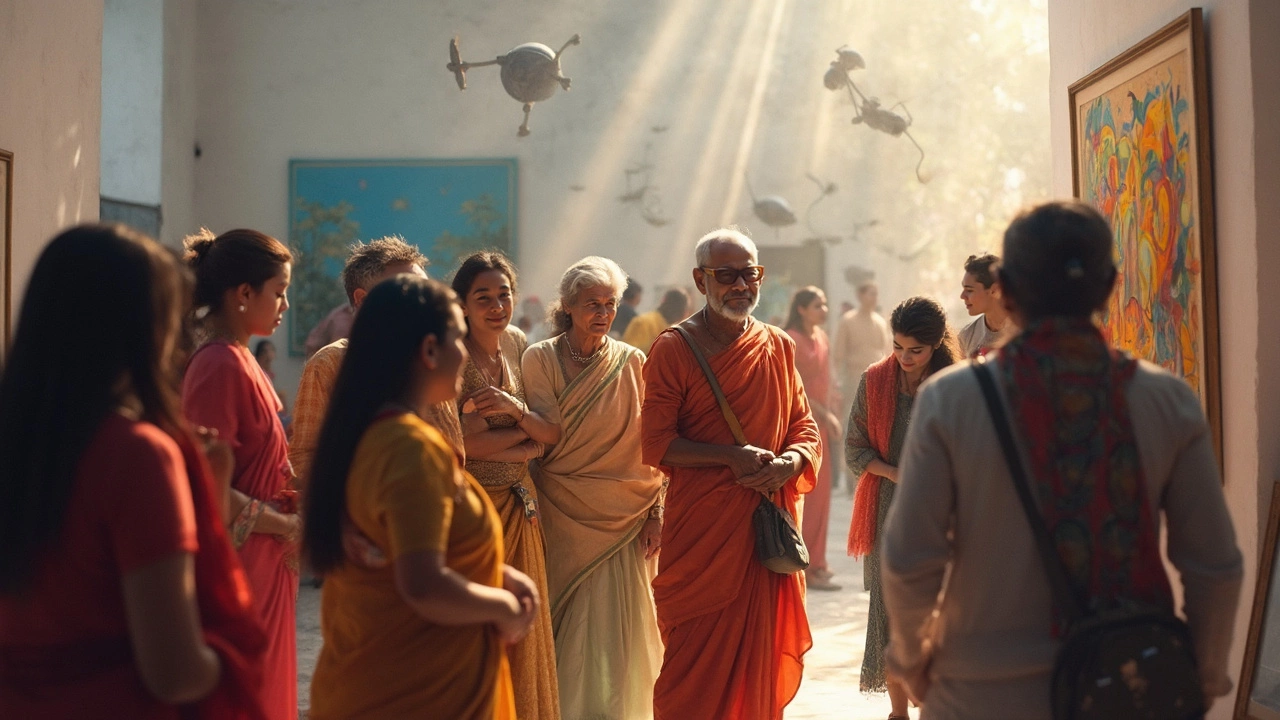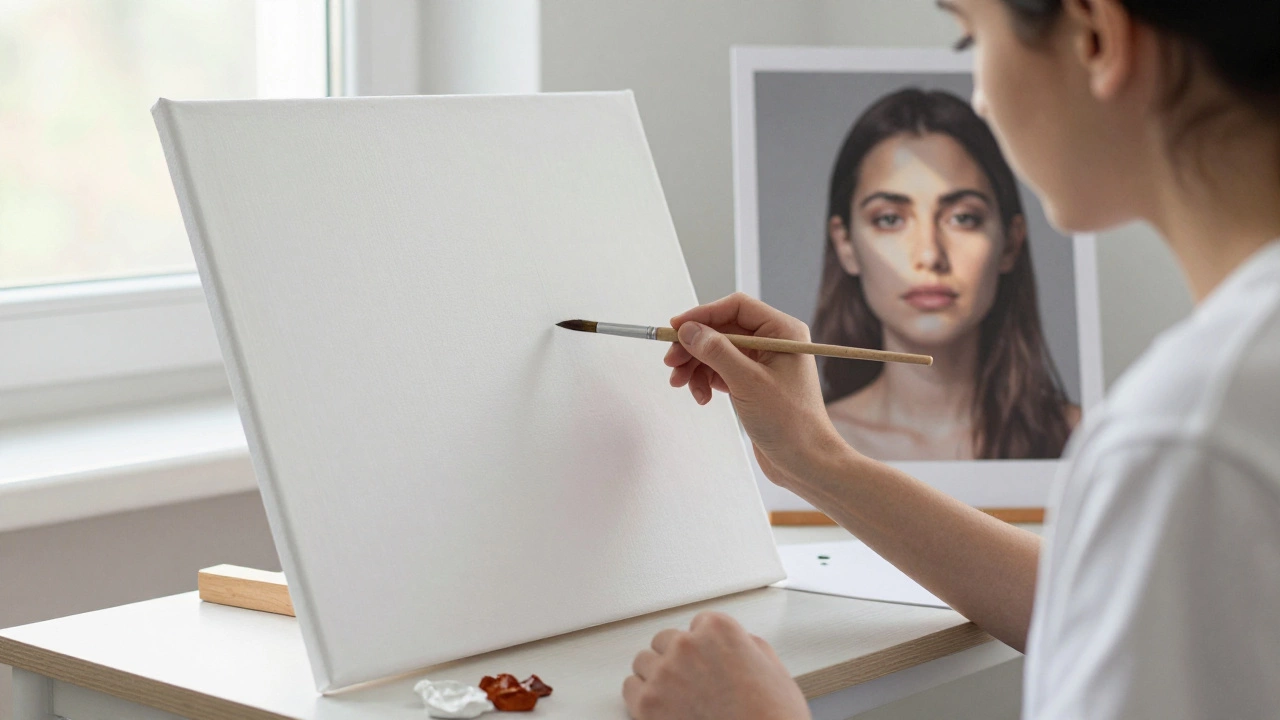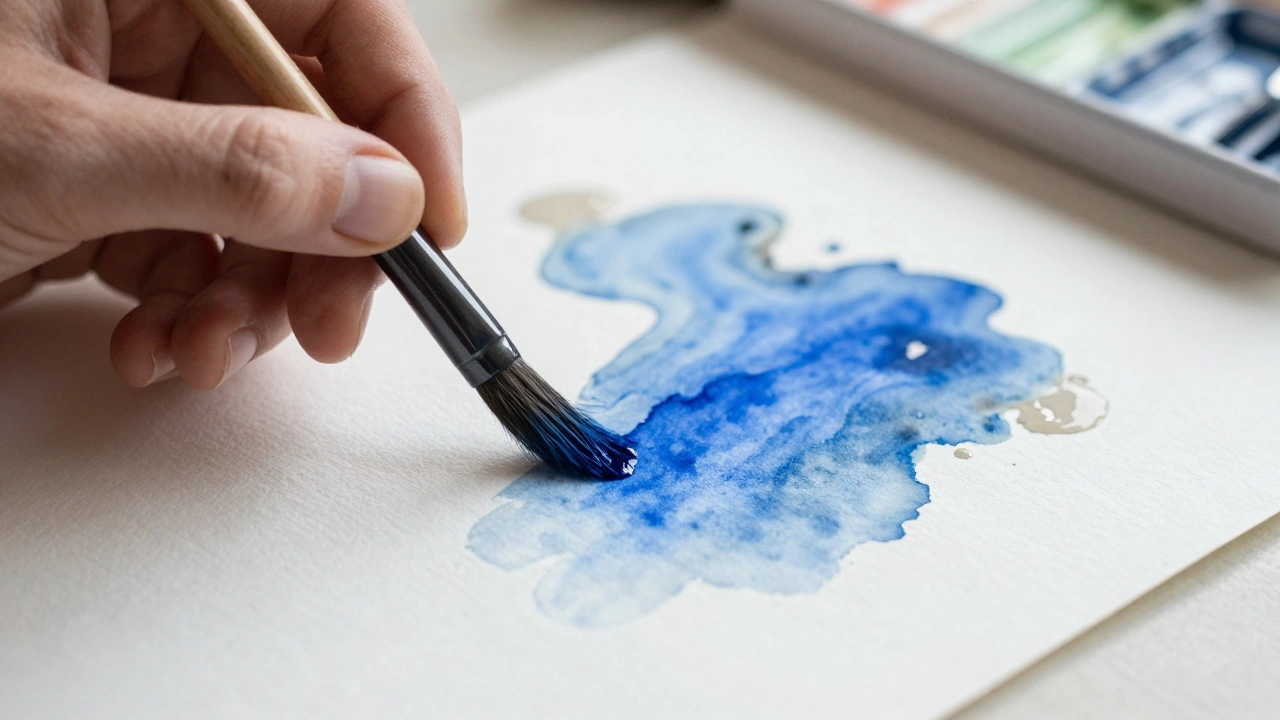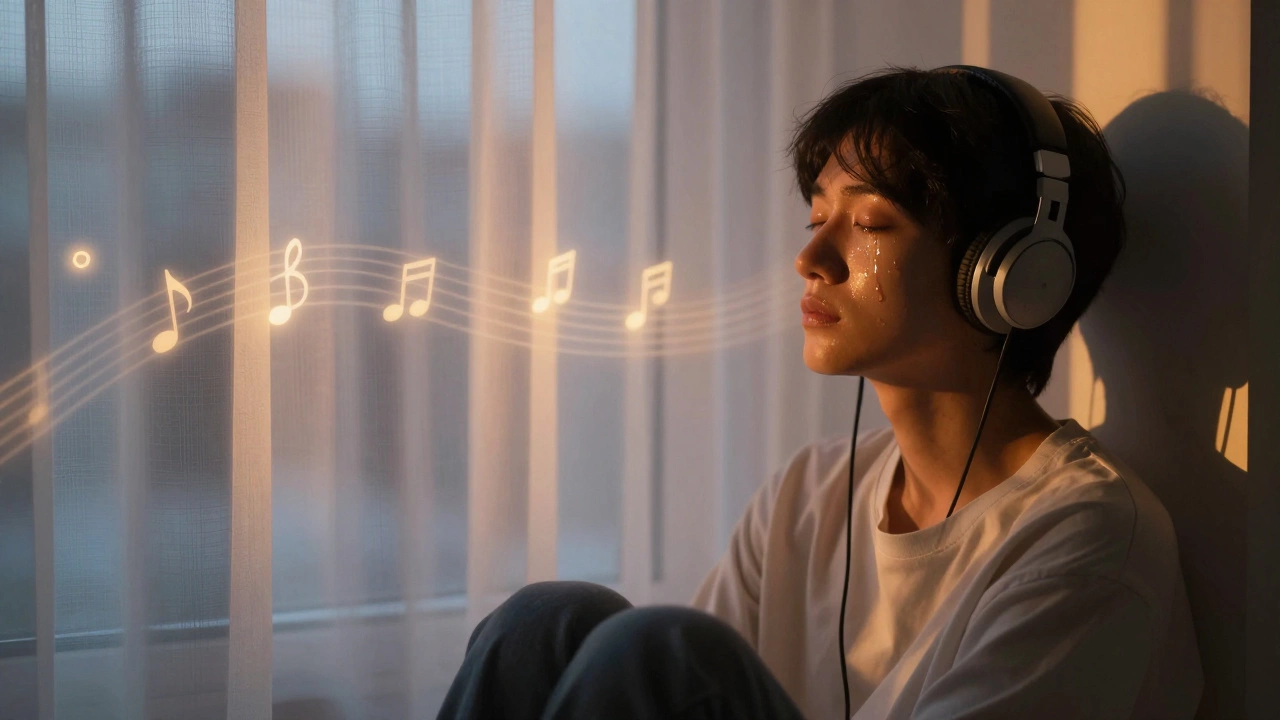Modern art doesn’t always look easy to like. Sometimes you pause in front of something—maybe a blank canvas with one red dot—and just think, ‘Really?’ The whole scene can feel confusing if you’re used to old-school portraits or detailed landscapes. But here’s the thing: the rules totally changed in the 20th century. Getting to the heart of good modern art is about asking new questions, not just admiring pretty pictures.
First up, stop worrying if it makes sense right away. Modern artists often care more about sparking questions or feelings than showing off technique. Does the work grab your attention? Does it make you feel anything, even confusion or curiosity? That split-second gut reaction tells you more than most wall labels ever could. Museums have done surveys where visitors spent less than 15 seconds at each artwork—so if you want to really see good modern art, slow down and let it hit you.
- Why Modern Art Looks the Way It Does
- Signs You’re Looking at Good Modern Art
- Common Pitfalls and Red Flags
- How to Trust Your Own Taste
Why Modern Art Looks the Way It Does
When you see modern art that looks nothing like what hung in your grandma’s living room, there’s a reason for that. Around the early 1900s, artists got tired of doing things the old way. Photography was taking over for realistic portraits, so painters like Picasso and Matisse started breaking things apart to see what else was possible. That’s how we got Cubism—think faces in weird angles and shapes—or the splashes and big emotional messes of Abstract Expressionism from folks like Jackson Pollock.
Lots of early modern artists had to fight against critics. For example, when Henri Matisse showed his bold colorful paintings in Paris in 1905, they called him and his buddies “wild beasts.” Now those works sell for millions. The shock factor was the point—they wanted people to stop and think, not just walk by impressed by skill.
This attitude kept spreading. You’ve got Dadaists (like Marcel Duchamp) who put things like toilets in galleries and told people, "If I say it’s art, it’s art." That made people argue, and it still does. Later, artists like Warhol used soup cans to paint everyday life. It sounds random, but it was a way to talk about culture and what’s actually worth attention.
- Modern art ditched old rules about beauty and perfection. It’s more about ideas and provoking reactions.
- Artists started using new materials—like industrial steel, found objects, or even TV screens—to break boundaries.
- The focus is often on honesty or even raw feelings, instead of technical skill alone.
If you want to see how much things changed, check out how fast the movements moved along. In just 40 years, art went from impressionist pretty landscapes to wild, confusing shapes and wild splashes.
| Year | Movement | Main Idea |
|---|---|---|
| 1907 | Cubism | Smash up reality (Picasso, Braque) |
| 1916 | Dada | Rebel, use anything (Duchamp) |
| 1950s | Abstract Expressionism | Feelings first (Pollock) |
| 1960s | Pop Art | Everyday is art (Warhol) |
The bottom line? Modern art is supposed to wake you up, challenge you, and open up new conversations. If it looks confusing, that’s often the point. Next time you stare at a scribble or a color block, remember: it’s about what’s behind it, not just what you see.
Signs You’re Looking at Good Modern Art
So you’re standing in front of a piece at the museum, and you’re wondering: is this actually good? You’re not alone. Lots of people struggle—modern art doesn’t have obvious rules like old-school painting. But there are real, practical signs that you’re seeing solid modern art and not just random stuff slapped on a wall.
For starters, good modern art usually has a strong idea behind it. Even if you don’t know exactly what the artist was thinking, you feel there’s something more going on. Take Picasso’s “Guernica”—it isn’t just wild shapes; it’s about war, pain, and chaos. Great pieces pack a punch, even if you don’t get every detail right away.
Another tip: check out the details. Is the artist just copying what everyone else is doing, or are they pushing things with their own spin? In 1950, Jackson Pollock shocked everyone by dripping paint straight on the floor—now it’s iconic because he did it first (and with real intention). If it feels new or challenges what you expect from art, you’re onto something.
Also, notice if the piece sticks with you. Most people glance at a painting for under 20 seconds, according to the Metropolitan Museum of Art. But if you’re stopping, replaying it in your head later, or thinking about what it means, that usually means the piece is doing its job. Good art appreciation isn’t about saying “I like it” right away—it’s about the work making you feel something real, or giving you a new way to see the world.
- Does it start a conversation or make you think?
- Is it original or brave in some way?
- Can you feel the artist’s intention or message?
- Do you keep thinking about it, even after you walk away?
Last, don’t forget about materials and technique, even if it looks simple. Minimalist works by Donald Judd or Dan Flavin look basic but involve clever choices about space, light, and structure. If it looks easy but feels oddly powerful or thought-out, that’s not an accident.
| What Experts Notice | Why It Matters |
|---|---|
| Original approach | Shows creativity and fresh thinking |
| Clear message or feeling | Connects with viewers on another level |
| Lasting impact | Stays with you after viewing |
| Technical skill (even if hidden) | Keeps the work from feeling sloppy |
Bottom line? Good modern art usually has intention, guts, and sticks with you. Trust yourself. The best art makes you pay attention, ask questions, or even disagree—and that’s the point.
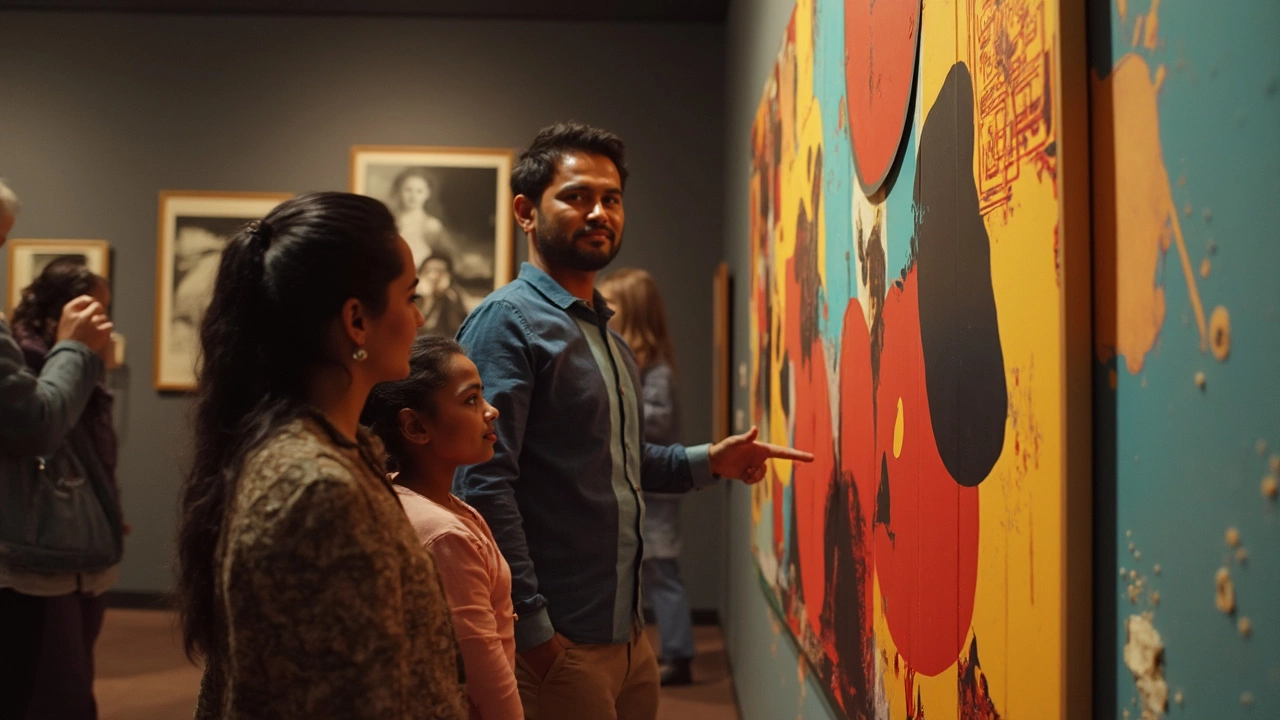
Common Pitfalls and Red Flags
When it comes to judging modern art, it’s not about being snobby or having fancy art degrees. But there are some clear warning signs that a piece might not be worth your time (or anyone’s time, for that matter). Let’s get real about what to watch for so you don’t fall into the ‘everything weird is genius’ trap.
Lots of people think anything can count as art if you just put it on a pedestal. Not true. Here are some red flags:
- No real effort or intention: If it looks like someone slapped paint around with zero thought, barely tried, or just copied a tired idea, it’s probably not strong work. It’s not about technical skill alone, but you should feel some energy or spark in the piece.
- Vague or nonsense descriptions: Ever read a wall label that sounds like it’s written by a robot? “This piece explores the liminality of boundary objects within the human paradigm.” Huh? If the artist or curator can’t make the idea clear in plain language, chances are the work doesn’t actually have much going on.
- Copycat syndrome: When artists jump on a trend just to fit in — whether it’s dot paintings, drippy paint, or found-objects glued on — you’ll see a lot of recycled stuff at art fairs. Trendy doesn’t mean original.
- Shock with no substance: Something crazy or offensive isn’t automatically smart or good. Modern art sometimes gets press for being out there, but if that’s all it offers, it wears off fast.
It helps to know the difference between being ‘minimal’ and just being lazy. For example, American artist Yves Klein’s blue canvases come from years of perfecting pigment and meaning. Meanwhile, tons of copycats popped up with pure color panels hoping for quick fame — and nobody remembers them now.
| Red Flag | Why It Matters |
|---|---|
| Empty artist statement | If you can’t tell what’s behind the work, the idea is probably thin. |
| No personal touch | Good art feels unique, not like it came straight off Pinterest. |
| All hype, no feeling | Buzz fades if there’s no actual connection or skill. |
If you’re new to art appreciation, one solid tip is to ask yourself: would I pause for this work if nobody told me it was ‘important’? Trust your gut. If it leaves you cold, don’t be shy about walking away.
How to Trust Your Own Taste
This is where folks get stuck with modern art. You walk into a gallery, see people nodding at a splatter painting, and wonder if you’re missing something huge. Here’s the real talk: there’s no one-size-fits-all rulebook. Art is personal, and your own reaction matters as much as, if not more than, any expert’s opinion.
Start by remembering that all those critics and curators? They’re working from their own tastes too. Even big-name experts have disagreed—famously, the New York Times once trashed the first showings of Picasso and Pollock, calling them nonsense. Now those same paintings are museum icons. Taste changes, trends shift, but what stays is your honest reaction.
If you’re still feeling lost, try these steps:
- Give yourself permission to not like something, even if it’s famous. You don’t owe anyone fake enthusiasm.
- Ask yourself why you like (or dislike) a piece. Is it the colors, the idea, a memory it brings up?
- Notice what you keep thinking about after you leave a museum. Real impact often takes a while to show up in your mind.
- Look for basic art tips from guides or audio tours. Sometimes learning what the artist was up to opens new doors—even if you still think a pile of bricks looks like… well, a pile of bricks.
Want a little perspective? Here’s a quick peek at how visitors have rated major modern art works in surveys:
| Artwork | First Impression (Avg. Score, 1-10) | Score After Learning Backstory |
|---|---|---|
| Jackson Pollock's "No. 5" | 4.2 | 7.1 |
| Mark Rothko's "Orange, Red, Yellow" | 5.0 | 8.0 |
| Damien Hirst's "The Physical Impossibility of Death..." | 3.7 | 6.2 |
The bottom line? Your gut instincts matter. Don’t let anyone—art snobs, strict teachers, or Instagram know-it-alls—talk you out of them. Every famous artist started as an oddball with their own creativity. The best way to spot what’s good in modern art is to honestly check in with yourself, no apologies needed. That’s the real secret that curators rarely say out loud.
